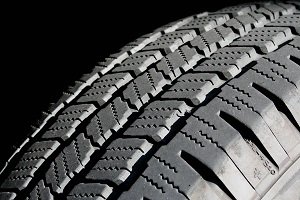Summer’s going to be here before you know it, and that means time for family road trips!
Thank you for reading this post, don't forget to subscribe!We know there’s a lot to think about when you’re planning a vacation…money, accommodations, scheduling, keeping the kids occupied in the car…but one thing you definitely should not neglect in those plans is your tires.
Summer road trips are hard on tires. You have to figure you’re in a car that’s likely loaded to the gills, driving for hours and hours to get to your destination in 90-plus-degree weather. That’s a good way to end up with overheated tires, and heat is the enemy of even the best tires. Here are a few things to consider before you load up the car and get going:
• Inflation – Did you know that underinflated tires cost you money in terms of fuel economy? According to the U.S. Department of Energy, studies show every 1-psi drop in tire pressure costs you 0.4 percent of your gas mileage. Rubber is a porous material, and tires will lose that much air pressure every month…so you can see how, left unchecked, it wouldn’t take long for underinflated tires to cost you one or two MPGs. Think about the last time you rode a bicycle with underinflated tires, and how it felt like you were riding through wet sand…that’s what you’re doing to your car with underinflated tires. Modern tire designs won’t deform at the bottom until they’re drastically low on air, so don’t rely on appearances to tell you if they’re low. Get a good quality tire gauge and check the inflation of all four tires while they’re cold. If you’re in doubt as to the proper inflation level, look for a manufacturer’s sticker on the inside of the driver’s door, the door post, inside the gas filler door or under the hood.
• Rotation – Due to weight distribution, braking and steering function and other factors, tires tend to wear in certain patterns when they’re left in the same position on the vehicle for too many miles. Regular tire rotations are one of the best ways to prevent that from happening. Tire rotations will make tires wear more evenly and will enhance a vehicle’s ride, handling and drivability. That also comes out to longer service life for all four tires; in fact, new tire warranties call for tire rotations at specified intervals. Considering that tires should be rotated about every 5,000 miles or so, it’s a good idea to schedule tire rotation at the same time you have your oil changes done.
• Alignment – Even with careful driving, your car will absorb jolts from potholes and road irregularities. Over time, that normal wear and tear will knock your front end out of spec. When your wheels are out of alignment, your tires will wear unevenly as one wheel tries to push or pull the car in a different direction. That drag and friction will cause rubber to “scrub” from the tires. In addition, a car that needs an alignment will constantly “pull’ to one side or another and will use more fuel. Let go of the wheel briefly — does your car want to head into the other lane, or toward the ditch? Do you have to hold the steering wheel off-center to maintain a straight line down the highway? Better make an appointment for a wheel alignment.
Before you load up the car and head out for this summer’s road trips, give us a call and come by so we can have a look at your tires. Better safe than sorry!


